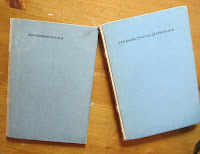From In A Tuscan Garden, published anonymously 1902
My great difficulty then, a difficulty that in a certain degree has continued to this day, was to get the old trees about us cut back and thinned out. Shade, in a climate such as Tuscany, where the hot summer is so prolonged, is of great value, but we were buried among old trees and foliage; they literally ate all the air; and their old roots were a terrible nuisance. The owner was absolutely devoid of any gardening instincts, but he had a horror of anything being cut away, and his gardeners were always in league to prevent anything that I wanted being carried out.
However, by dint of great energy, I did succeed in persuading the secretary to consent to clearing out the shrubbery, on our side of the avenue, to a depth of about seven feet, which gave us a good border, running down the whole length of the garden.
Just as the villa gardeners had finished this work, I heard of a good gardener, who was available for a job, and engaged him temporarily to put the place into something like order. He was with us for nearly three months, when he left Tuscany to take up a permanent post with some of the Borghese family in Rome. Labour is still very cheap in Tuscany, but I could not have afforded a permanent gardener, nor was there enough work for one at that stage of the proceedings, least of all for a man of such qualifications as his; but I thought myself very fortunate in getting him, as so much depends on the way first plantings are done.
The ordinary garden soil in these parts is, as the head of the Botanical Gardens at Hong Kong lately described what he has to do with, “very extraordinary indeed”, and is only good for vines and tea-roses. Almost everything else must have its own particular compost; good garden soil, such as we should take in England as a matter of course, does not exist out here; indeed many of the gardens are formed of a few feet of earth on a foundation of rock. It is partly owing to this, and partly to the want of water, and also for the convenience of shifting from sun to shade, that so much of the Tuscan gardening consists of plants grown in pots. In our own case we had not the difficulty of the rock foundation to deal with, for the great distinction of this property is, that it possesses an extent of level ground most unusual in this mountainous region. But wherever we dug seemed a kind of Monte Testaccio: the most extraordinary deposits of broken crockery, old wine-flasks, stones of all sorts and sizes, - in short everything that ought not to have been in a garden seemed to be there. The earth was of a sticky yellow substance, though not clay, and was unlike any soil I had ever seen before; but after fifteen years of constant manuring and attention it is now quite possible. Having no stable, all the manure has to be bought, and that, as well as many other composts, come from a great distance, so that we turn, as much as possible, everything to account. And it is surprising how much good soil can be got out of such spazzatura as, in England, would go into the dust-bin; all this, as well as the decayed leaves and ordinary garden refuse, are buried in one or two pits dug at the bottom of the garden, and well turned over from time to time; and of course the wood ash, of which we have quantities from the winter’s firing, is of itself a most valuable manure.
One day last year as I was showing my little garden to a great botanical authority he looked at the soil, remarked on its superiority, and said that, with such soil as that, one might grow anything. I wished he had seen it in its original condition!
























